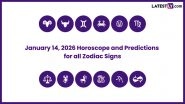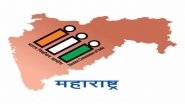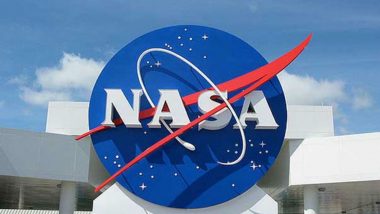Washington, Jun 11: NASA is set to launch a pair of mini satellites that will study how military and airline communications, as well as GPS signals, get distorted when they pass through the Earth's upper atmosphere.
The twin E-TBEx CubeSats -- short for Enhanced Tandem Beacon Experiment -- are scheduled to launch on June 24 aboard the US Department of Defense's Space Test Program-2 launch along with a total of 24 satellites.
The E-TBEx CubeSats focus on how radio signals can be distorted by structured bubbles in this region, called the ionosphere. Especially problematic over the equator, these distortions can interfere with military and airline communications as well as GPS signals.
The more we can learn about how these bubbles evolve, the more we can mitigate those problems -- but right now, scientists can not predict when these bubbles will form or how they will change over time.
"These bubbles are difficult to study from the ground," said Rick Doe, payload programme manager for the E-TBEx mission.
"If you see the bubbles start to form, they then move. We're studying the evolution of these features before they begin to distort the radio waves going through the ionosphere to better understand the underlying physics," Doe said.
The ionosphere is the part of Earth's upper atmosphere where particles are ionised -- meaning they are separated out into a sea of positive and negative particles, called plasma.
The plasma of the ionosphere is mixed in with neutral gases, like the air we breathe, so Earth's upper atmosphere -- and the bubbles that form there -- respond to a complicated mix of factors. Since its particles have electric charge, the plasma in this region responds to electric and magnetic fields.
This makes the ionosphere responsive to space weather: conditions in space, including changing electric and magnetic fields, often influenced by the Sun's activity.
Scientists also think that pressure waves launched by large storm systems can propagate up into the upper atmosphere, creating winds that shape how the bubbles move and change.
This means the ionosphere -- and the bubbles -- are shaped by terrestrial weather and space weather alike. The E-TBEx CubeSats send radio beacon signals at three frequencies -- close to those used by communications and GPS satellites -- to receiving stations on the ground, at which point scientists can detect minute changes in the signals' phase or amplitude.
Those disruptions can then be mapped back to the region of the ionosphere through which they passed, giving scientists information about just how these bubbles form and evolve.
"All signals are created at the same time -- with the same phase -- so you can tell how they get distorted in passing through the bubbles," said Doe.
"Then, by looking at the distortions, you can back out information about the amount of roughness and the density in the bubbles," he said.
The data produced by the twin CubeSats is complemented by similar beacons onboard NOAA's six COSMIC-2 satellites. Like the E-TBEx CubeSats, the COSMIC-2 beacons send signals at three frequencies -- slightly different than those used by E-TBEx -- to receiving stations on the ground.
The combination of measurements from all eight satellites will give scientists chances to study some of these bubbles from multiple angles at the same time.













 Quickly
Quickly


